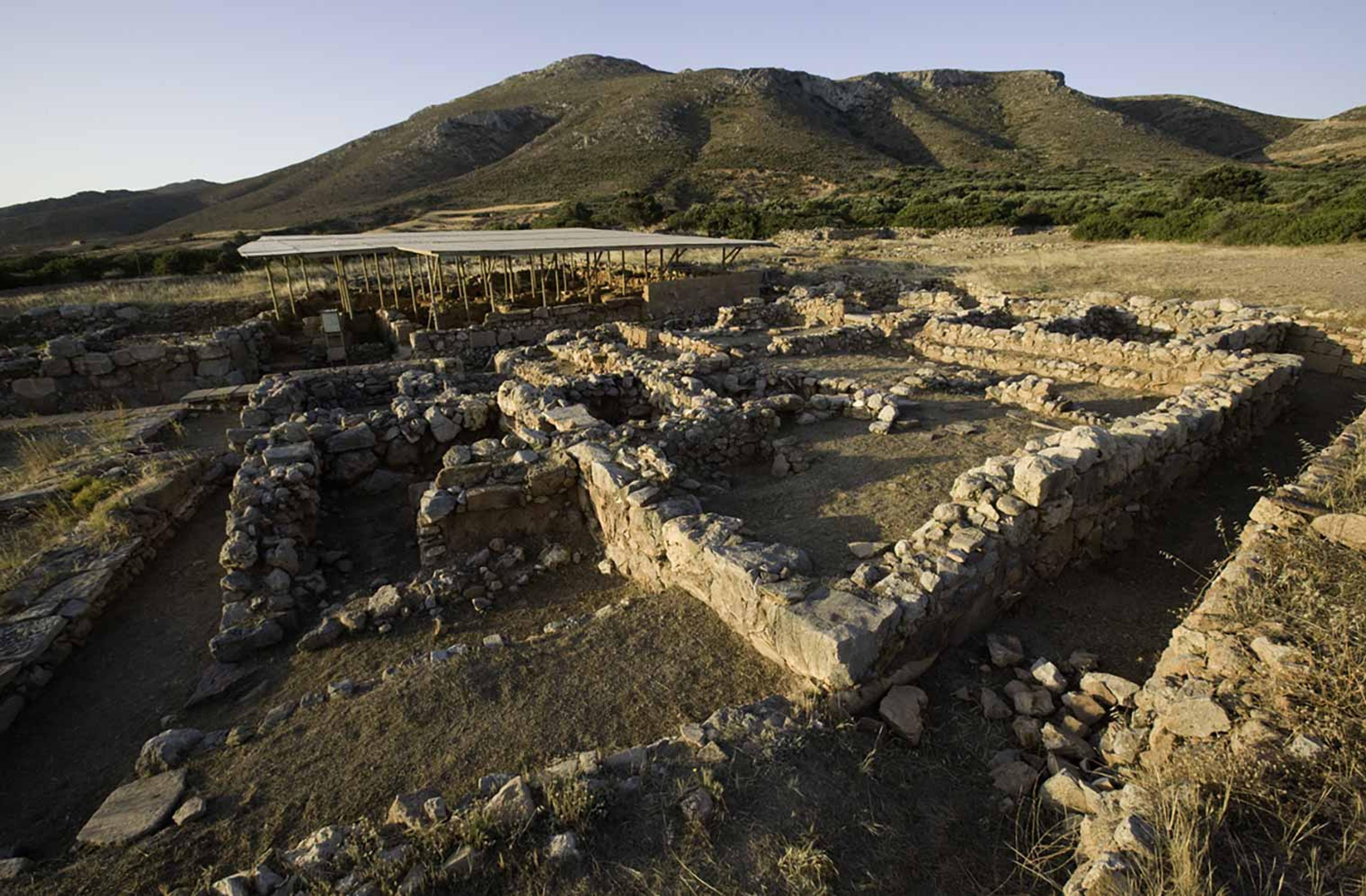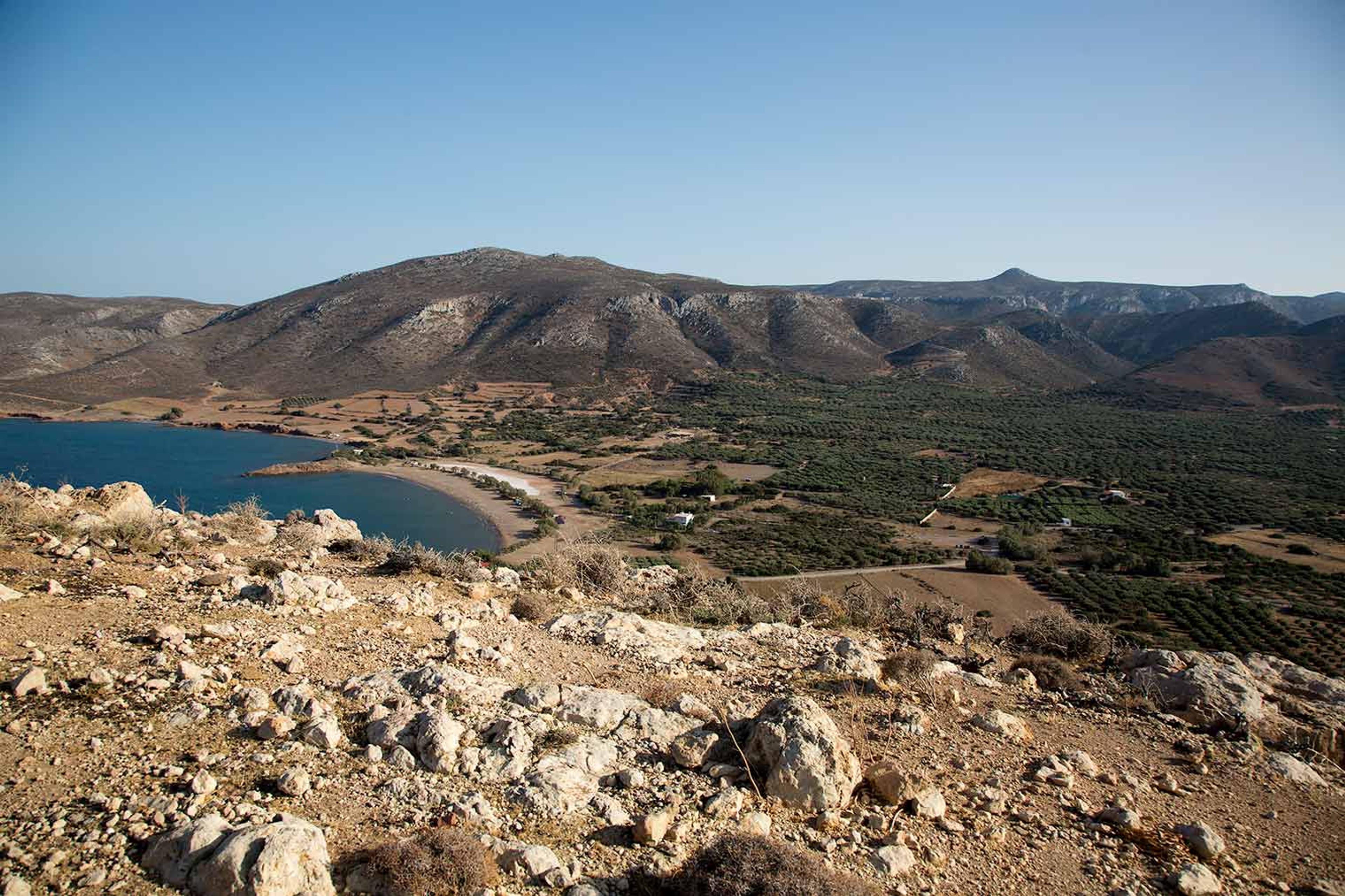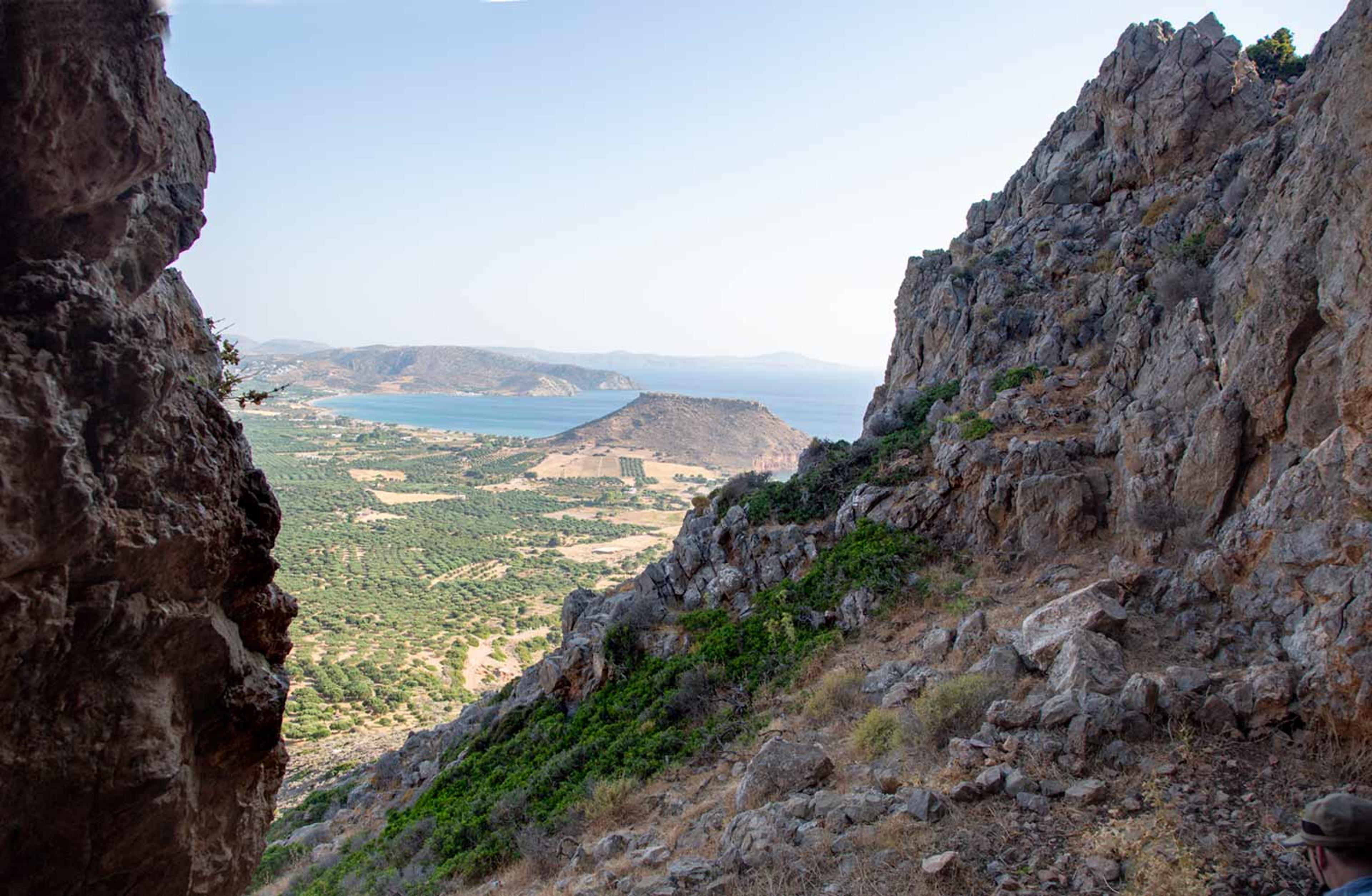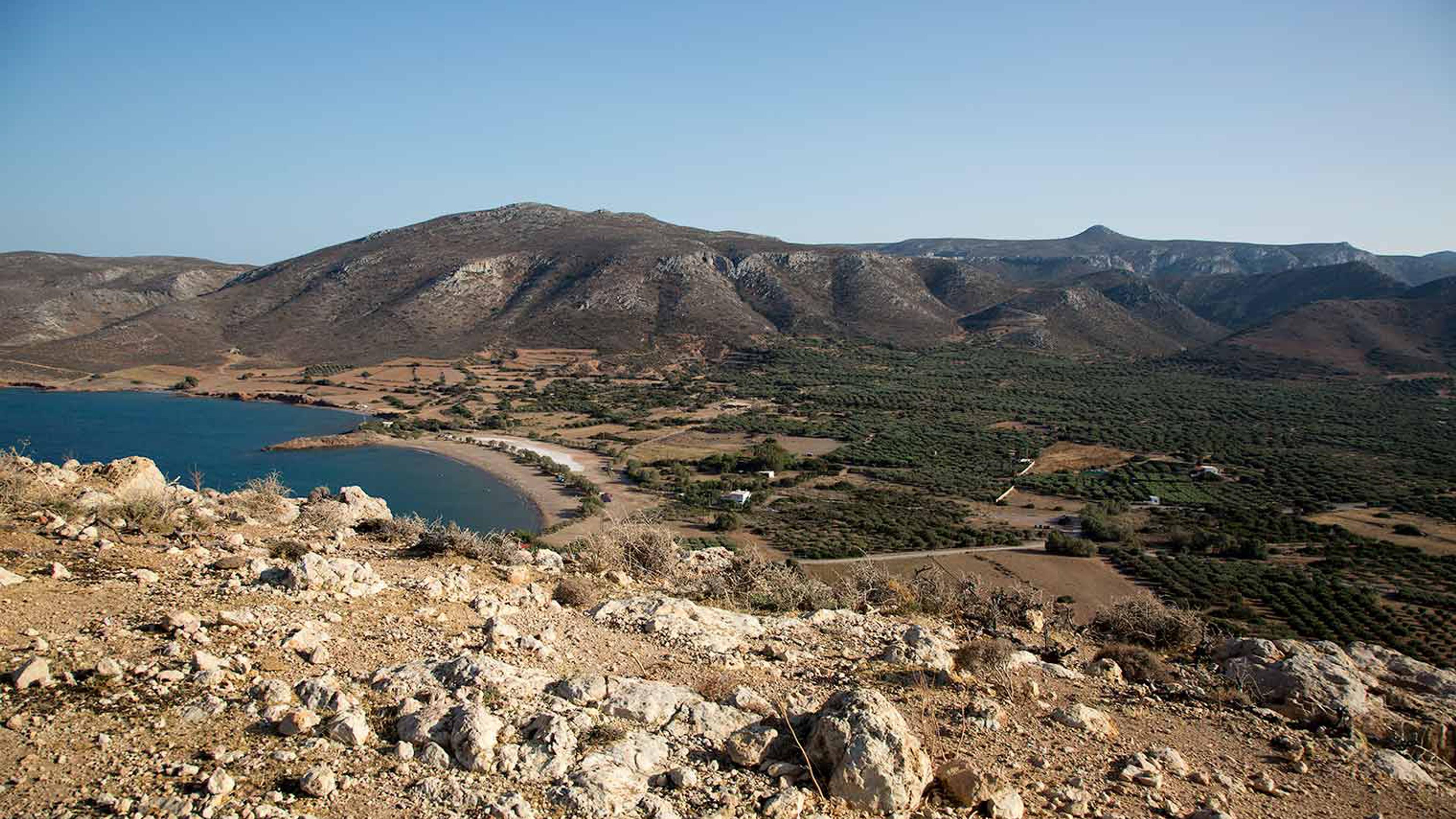During the Bronze Age (ca. 3000–1050 B.C.), Palaikastro, in eastern Crete, was the site of a major Minoan town, which at its height in the middle of the fifteenth century B.C. was one of the largest settlements on the island. Later, in ancient Greek and Roman times, it became the site of one of the most important sanctuaries, known as the Diktaian sanctuary, to Zeus on Crete.

Building 4 and Building 5 (with modern roof) of the 1986-2003 excavations at Palaikastro, Petsophas in the background, 2011. Photograph by Bruce Schwarz

The Roussolakkos plain in eastern Crete viewed from the Kastri hill, with Mount Petsophas in the background, 2018. The excavations of the settlement at Palaikastro are in the valley in the middle ground. The remains of the Minoan town continue into the sea. Photograph by Bruce Schwarz
The Palaikastro excavations operate under the auspices of the British School at Athens with the permission of the Greek Ministry of Culture. The British School began excavations at Palaikastro in the early twentieth century, with a five-year campaign between 1902 and 1906, and returned in the 1960s. A subsequent campaign of survey and excavation on the Roussolakkos plain between 1983 and 2003 yielded a wealth of information about the site that is the subject of current ongoing study for publication under the direction of J. Alexander MacGillivray and formerly L. Hugh Sackett. Most recently, excavations were conducted between 2013-2015, under the direction of Carl Knappett as part of the Palace and Landscape at Palaikastro (PALAP) project. A Metropolitan Museum curator in the Department of Greek and Roman Art is a senior member of the international research team and has been involved in the excavation and study of the site since 1988.

View of the recent excavations from 2013-2015, part of the Palace and Landscape at Palaikastro (PALAP) project, 2016. Photograph by Bruce Schwarz
The above video, produced at The Met in 2018, gives a good sense of the project and the variety of work that was undertaken at the Agios Antonios Research Center in the summer of 2017. In the summer of 2018, it was a special privilege to welcome Daniel H. Weiss, President and CEO of The Met, the first senior member of the Museum’s administrative team to visit the site. In 2019, Seán Hemingway, John A. and Carole O. Moran Curator in Charge of the Department of Greek and Roman Art and Bruce Schwarz, Senior Photographer, returned to Palaikastro to continue their study of Building 4 from the Minoan settlement as well as the metal finds from the PALAP excavations.

View from the cave on Mount Petsophas, June 2019. Photograph by Bruce Schwarz
A highlight of the 2019 season was a hike up to the cave on Mount Petsophas, which looks over the ancient settlement. From at least the nineth century B.C. to the 2nd century A.D. the sanctuary at Palaikastro was a major regional sanctuary dedicated to Diktaian Zeus. According to myth Zeus was born on Crete and hidden in a cave there from his father Kronos, protected by young initiates called Kouretes who hid the baby’s cries by clashing their shields together. The cave on Mount Petsophas has not been excavated but it likely served a religious purpose being the only cave visible from the ancient sanctuary. Many cave sanctuaries have been excavated on Crete, of which the largest and most impressive known today is the Psychro Cave nestled in the Lasithi Mountains high above the Lasithi Plain of eastern Crete. The Psychro Cave is also known as the Diktaian Cave and major votive objects from Minoan and ancient Greek times have been found there.

View from the mouth of the Psychro Cave, also known as the Diktaian Cave, June 2019. Photo by Bruce Schwarz
This archaeological project has been funded by the British School at Athens with support from the Institute for Aegean Prehistory and other donors. The participation of Met staff members has been made possible since 2005 by The Adelaide Milton de Groot Fund, in memory of the de Groot and Hawley Families.
